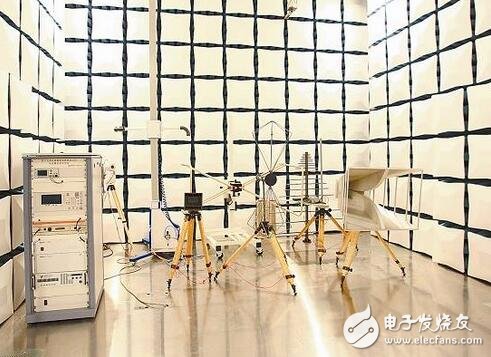When the RF circuit is designed according to the preset scheme, its performance may not be fully met. One of the important factors that may cause the RF performance to fail to meet the standard is electromagnetic interference, which is not necessarily due to RF. The layout of the circuit and the unreasonable wiring are also caused by other aspects. In most cases, interference occurs when combined with other circuits, such as digital circuit parts, power circuit parts, and the like.
Handling interference problems is a must for design work, and it is one of the priorities of RF design and pre-research work. Here is a brief talk about our understanding and understanding of electromagnetic interference in radio frequency.
Electromagnetic interference (EMI) is ubiquitous in electronic systems and devices, and is particularly prominent in the RF field. Although electromagnetic interference is very strange in RF systems, the most prominent and most influential part is the influence of the key pointer sensitivity of the low-noise amplification of the receiving front end of the RF system. The second is the visible, audible video, audio signal effects, etc. This is the most concerned about our RF work. Where does the interference come from? Is the low noise of the RF hardware itself and the system not doing well, or is the antenna not doing well? If we firmly believe that low noise and system, antenna, etc. are all right, our thinking will involuntarily think of interference: is the interference signal affecting RF performance?

In most cases, if you are not a senior technician, you should consider the EMI interference level. Generally, it will be a few rounds in the RF low noise amplifier and the system and the antenna. Even a lot of time is wasted. Finally, the interference level is considered. .
Products that are non-interfering and perform well are all very happy; there are different and different effects of interference products with different functions. Considering the interference problem has become our most important agenda. When considering interference, we may ask: What is interference, where does the interference come from, how to test and quantify interference? What is important is how to reduce interference? The EMC problem is unexpected. In the long-term work, we have also been deeply cherished and deeply hurt by electromagnetic interference. Therefore, in the long-term work, we will continue to summarize, analyze and find EMC related problem processing techniques and techniques. These techniques and techniques are now our most valuable experience. After countless verifications, dealing with interference problems is always handy.
Electromagnetic interference (EMI) is ubiquitous in electronic systems and equipment, so how to make electronic systems and equipment meet electromagnetic compatibility (EMC) requirements is a key technology.
Due to the rapid development of the RF and microwave fields, the climax of demand is prompting RF engineers to pay more and more attention to RF circuit design techniques. The design of RF boards is the most difficult part for design engineers. If you want to be successful once, careful planning and attention to detail are the two key design rules that must be taken seriously. It is an important design rule to keep digital circuits away from analog circuits in all PCB designs. Otherwise, design changes due to this negligence may lead to a reversal of the design that is about to be completed. The serious consequences of this negligence will be self-evident.
Because RF board PCB design has many uncertainties in theory, it is often described as a black art, but this view is only partially correct. RF circuit PCB design also has many guidelines to follow and rules that should not be overlooked. However, in practical design, the real practical skill is how to compromise these rules and rules when they cannot be accurately implemented due to various design constraints.
Today's RF circuit design mostly integrates everything in a variety of ways, which is detrimental to RF board PCB design. Nowadays, the competition in the industry is very fierce, and people are looking for ways to integrate the most functions with the smallest size and lowest cost. The analog, digital, and RF circuits are tightly packed together, and the space used to separate the respective problem areas is very small, and the number of board layers is often minimized, taking into account cost factors. What's incredible is that the versatile chip integrates multiple functions on a very small die, and the pins that connect to the outside are placed very closely together, so the RF, IF, analog, and digital signals are very close. But they are usually electrically irrelevant. Power distribution can be a nightmare for designers. To extend battery life, different parts of the circuit work in time-sharing as needed and are controlled by software. This means that you may need to provide 5 to 6 working power sources for your phone. Even so, when designing an RF layout, as a senior RF expert, there are always many principles that must be considered and met first.
Due to the length of the relationship, the above various issues will not be discussed in detail, but the design of the RF circuit PCB board does need to consider many factors. It can be said that it is bit by bit, just like the above, if you want to succeed once, you need careful planning and attention to detail, from macro to micro, try to do every step. When the schematic design is completed, the actual wiring work should not be carried out immediately, but planning and analysis. Mark the results of the planning and analysis on the schematic; circle the partitioned circuits with colored pencils of different colors; mark the important analog lines, digital lines, and RF lines. There are a lot of things in the layout and layout, busy and not chaotic.
Cable Assemblies /Wiring Harness
Ribbon Flat Cable,Ffc Cable,Rf Coaxial Cable,Electronics Wire
Shenzhen Hongyian Electronics Co., Ltd. , https://www.hongyiancon.com
